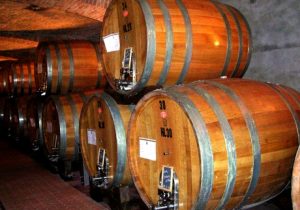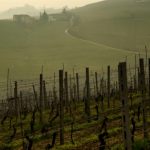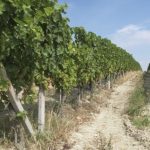
Name
Barbaresco AOCG
Seal of quality
Product denomination. Products with seal of quality correspond to the acknowledged denomination.
A.O.C. – D.P.R. 23th April 1966
A.O.C.G. – D.P.R. 3rd October 1980
Description
An intense and brilliant wine, shading from ruby red to garnet, and a stimulating bouquet of persisting fruity or ethereal fragrances recalling raspberries and red-fruit jams, geraniums and violets, but also green pepper, cinnamon and nutmeg, hay and wood, toasted hazelnut, vanilla, and even aniseed. The secret of this noble wine lies in the mystical and unpredictable symbiosis between the calcareous – clayey substrata of the hills, the very same that secretly give life to the precious white truffle of Alba, and the Nebbiolo vineyards that delineate the horizons of this region, portraying a natural landscape of incomparable beauty.
The vine is 100% Nebbiolo in the sub-varieties Michet, Lampia and Rosè. The minimum ageing period established by the Disciplinary Regulations is 24 months, 12 of which in durmast or chestnut barrels. “Barbaresco” undergoes an ageing period of no less than four years and, as additional specification, can bear the word “reserve”. The minimum alcoholic content is 12.5% vol.
Area of production
The area includes the entire administrative region of the following communes: Barbaresco, Treiso and Neive and a part of the village of San Rocco Seno d’Elvio in the commune of Alba.
History
The wine of Barbaresco, a hilly commune Southeast of Alba, with its impressive tower, overhanging the banks of the Tanaro, was already known to the Romans.
Tito Livio mentioned it in his Storia Romana and it is here that the Roman road linked the Ligurian coast with Turin, crossing a region that already had a significant wine-making inclination. Long before then, in fact, the ancient Ligurians had colonised these hills; the origin of vine-growing is probably thanks to them, as also the very name of the town, Barbaresco, which, as it would seem, derives from the definition Barbarica silva referring to an oak wood in the area with sulphur and salty water springs that the Ligurians considered sacred. Therefore, it was not by chance that a basket overflowing with grapes is carved in the wooden chancel of the Duomo d’Alba, above the depiction of the medieval village of Barbaresco.
Many words have been spent on this red wine of superb aristocracy, but the most famous was an anecdote by the Austrian general De Melas who, in 1799, having defeated the French in battle, and wanting to worthily celebrate this victory, demanded that several bottles of “Nebiolo di Barbaresco” be sent to his camp. It was only towards the 19 th century that Barbaresco became once and for all dry, according to the new wine-making technique introduced by Dominique Cavazza, a well-known agronomist and the first director of the Regia Scuola Enologica of Alba, who wanted this wine to be “delicate, smooth, generous” as were the greatest French wines.
In 1934, requested by the wine-makers themselves, the “Consorzio per la difesa dei vini tipici di pregio Barolo e Barbaresco” was created, and productive perspectives were also established: area of origin, grape and the characteristics. The Consortium was later reconstituted in 1947, with the purpose of obtaining status for these wines, first, Quality Wine (AOC), and then AOCG. Lastly, in 1994, the present “Consorzio di Tutela Barolo, Barbaresco, Alba Langhe and Roero” was founded as a point of reference for wine-makers in the area between Langa and Roero.
1986 marked the inauguration of the “Enoteca Regionale del Barbaresco” (Regional Barbaresco Wine Cellar) in the ex confraternity of San Donato, with the objective of promoting and safeguarding Barbaresco wine and its land.


